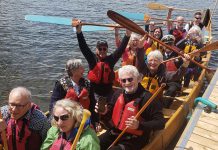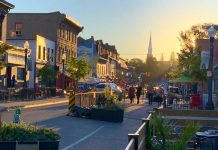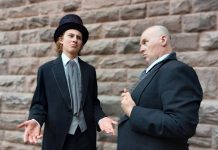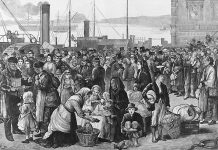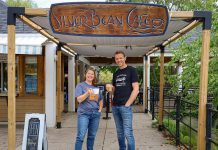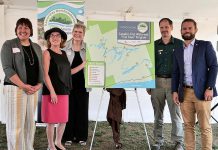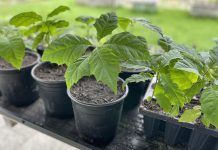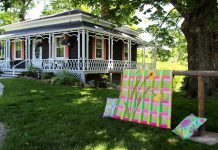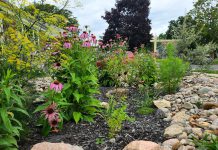
Forests Ontario has given heritage status to five historic sycamore trees in Lindsay — a distinction only bestowed on about 100 trees in southern and central Ontario.
Well-known to Lindsay residents, the large 132-year-old trees are located on the west side of Victoria Avenue just north of Peel Street.
Canopy Project Kawartha Lakes, a volunteer-led community group whose goal is to increase the urban canopy in the settlement areas of the City of Kawartha Lakes, nominated the trees for heritage status with the approval of the municipality’s parks department.
Tom Mikel, coordinator of Fleming College’s urban forestry program, described the trees as “incredible specimens” in a letter supporting the heritage status of the trees, according to a media release from Canopy Project Kawartha Lakes, adding the trees are the highlight of his annual Lindsay field walks with students.
“For most students, this is the first time they may be seeing an American Sycamore (P. accidentalis) in real life, and almost certainly their first time seeing ones so massive,” Mike wrote in his letter of support.
Sycamores are the largest deciduous tree in eastern North America, but they usually don’t grow as far north as Lindsay. They are recognizable by their large canopies and the distinctive camouflage-like pattern created by their mottled and peeling bark.
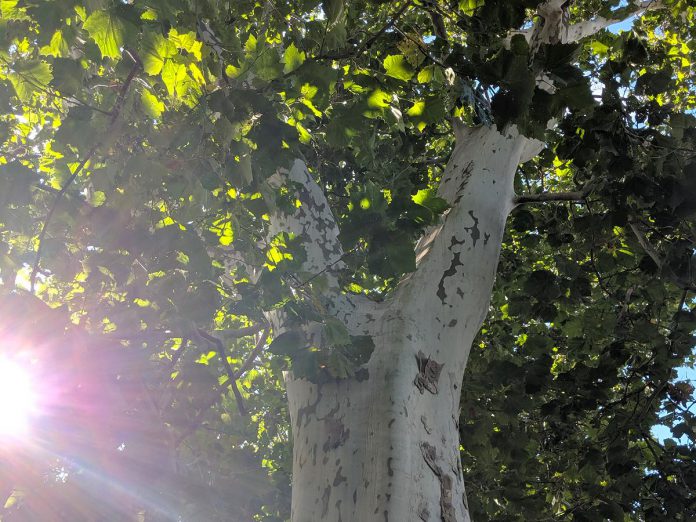
The five trees were planted as two-year-old saplings in 1892 by Richard Sylvester, who operated Sylvester Manufacturing Co. along with his brother. The Sylvester Manufacturing Co. factory, which was located south of Kent Street West in the block now occupied by Tim Horton’s, Home Hardware, and Lindsay Dry Cleaners, made agricultural and farm implements and employed around 100 residents.
Sylvester, who lived in the large white brick house on the northwest corner of Victoria Avenue and Peel Street, also donated the land that became Victoria Park.
“The forethought someone had in leaving this legacy over a century ago is astounding,” Mikel stated.
Forests Ontario’s heritage tree program, launched in 2009 in partnership with the Ontario Urban Forest Council, recognizes trees associated with a historic person or event or growing on historically significant land, also taking into account a tree’s prominence in a community and other factors such as a tree’s age, size, rarity, and beauty.
There are four other trees in the greater Kawarthas region that have heritage status from Forests Ontario: a 185-year-old bur oak at Maryboro Lodge in Fenelon Falls known as the “Grand Old Lady”, a 130-year-old white ash in Balsam Lake Provincial Park in Kirkfield, a 235-year-old white oak in Port Hope, and a 265-year-old American beech in Cobourg.
The heritage status from Forests Ontario does not provide any legal protections for trees, although some municipalities have by-laws that may protect heritage trees.


